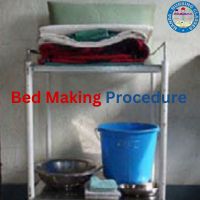The Oral Glucose Tolerance Test (OGTT) is a widely used diagnostic procedure to assess the body’s ability to metabolize glucose. It is primarily used for diagnosing conditions like diabetes and gestational diabetes. This guide covers the procedure, benefits, types, normal values, and frequently asked questions to provide a comprehensive understanding of OGTT.

Definition of Oral Glucose Tolerance Test
The Oral Glucose Tolerance Test (OGTT) is a medical diagnostic test that evaluates how well the body processes glucose. It measures blood glucose levels before and after consuming a glucose-rich beverage. The test is often used to detect prediabetes, type 2 diabetes, and gestational diabetes in pregnant women.
Types of Oral Glucose Tolerance Tests
- Standard OGTT:
- Used for diagnosing type 2 diabetes or prediabetes.
- Includes fasting glucose measurement and subsequent blood tests after glucose ingestion.
- Gestational OGTT:
- Specifically designed to diagnose gestational diabetes during pregnancy.
- Typically involves multiple blood draws over a few hours.
Benefits of Oral Glucose Tolerance Test
- Early Detection: Helps diagnose diabetes and prediabetes before symptoms appear.
- Accurate Results: Provides detailed information about the body’s glucose processing over time.
- Prevention of Complications: Early diagnosis allows for timely intervention, reducing the risk of complications.
- Pregnancy Monitoring: Essential for monitoring and managing gestational diabetes.
Procedure for Oral Glucose Tolerance Test in the Community
Preparation:
- Fasting:
- The individual must fast for at least 8-12 hours before the test.
- Rationale: Fasting ensures a baseline glucose level unaffected by recent food intake.
- Avoid Physical Strain:
- Avoid intense physical activity 24 hours before the test.
- Rationale: Physical activity can temporarily affect glucose levels, leading to inaccurate results.
- Medications:
- Inform the healthcare provider about any medications being taken, as some may affect results.
- Rationale: Certain medications, such as corticosteroids, can influence glucose metabolism.
Steps:
- Baseline Fasting Blood Test:
- A blood sample is taken to measure fasting blood glucose levels.
- Rationale: This establishes the starting point for glucose level comparisons.
- Glucose Solution Intake:
- The patient drinks a glucose-rich beverage (typically containing 75 grams of glucose).
- Rationale: The glucose load challenges the body’s ability to regulate blood sugar levels.
- Timed Blood Tests:
- Blood samples are taken at regular intervals (usually 30 minutes, 1 hour, 2 hours, and sometimes 3 hours) to measure glucose levels.
- Rationale: Sequential measurements track how efficiently the body processes glucose over time.
- Monitoring:
- The individual may rest during the waiting periods but must avoid eating, drinking (other than water), or strenuous activity.
- Rationale: External factors can affect test accuracy and must be controlled.
How to Take an Oral Glucose Tolerance Test
- Schedule an appointment with a healthcare provider.
- Follow fasting instructions provided by the medical professional.
- Arrive at the testing location on time, ensuring compliance with preparation guidelines.
- During the test, cooperate with healthcare staff for timely blood sample collection.
- After the test, resume normal diet and activities unless instructed otherwise.
Normal Values for OGTT
- Fasting Blood Glucose: Less than 100 mg/dL.
- 1 Hour After Glucose: Less than 180 mg/dL.
- 2 Hours After Glucose: Less than 140 mg/dL.
- Gestational Diabetes Thresholds:
- Fasting: 95 mg/dL or less.
- 1 Hour: 180 mg/dL or less.
- 2 Hours: 155 mg/dL or less.
- 3 Hours: 140 mg/dL or less.
Related Articles
- “What to Expect During an OGTT”
- “OGTT vs. HbA1c: Which Test is Right for You?”
- “Managing Blood Sugar Levels After OGTT Results”
Conclusion
The Oral Glucose Tolerance Test is a critical tool for diagnosing glucose metabolism disorders. By following proper preparation and understanding the results, individuals can take proactive steps to manage their health. OGTT is especially significant for early intervention in diabetes and monitoring gestational diabetes during pregnancy.
Also, read
“Antenatal Physical Examination“
“How to take an oral glucose tolerance test in pregnancy? “
FAQs
Can I eat before the OGTT?
No, fasting for 8-12 hours is required for accurate results.
How long does the OGTT take?
Depending on the test type, it can take 2-3 hours.
Are there side effects of the glucose drink?
Some individuals may experience nausea or dizziness, but these are temporary.
Can I take the test at home?
OGTT is typically performed in clinical settings to ensure accurate monitoring and sample collection.
What happens if my results are abnormal?
Consult your healthcare provider for further evaluation and possible lifestyle or medical interventions.
Why is fasting required before the test?
Fasting ensures that the baseline glucose measurement is accurate and not influenced by recent food or drink intake.
Can physical activity affect OGTT results?
Yes, intense physical activity before the test can alter glucose levels, leading to inaccurate results.
What should I bring to the test?
Bring identification, any relevant medical records, and water to stay hydrated during the test.
How often should OGTT be performed?
The frequency depends on individual risk factors, such as family history of diabetes or pregnancy. Consult your healthcare provider for advice.
Is OGTT safe for pregnant women?
Yes, it is a standard test for diagnosing gestational diabetes and is considered safe when conducted under medical supervision.



